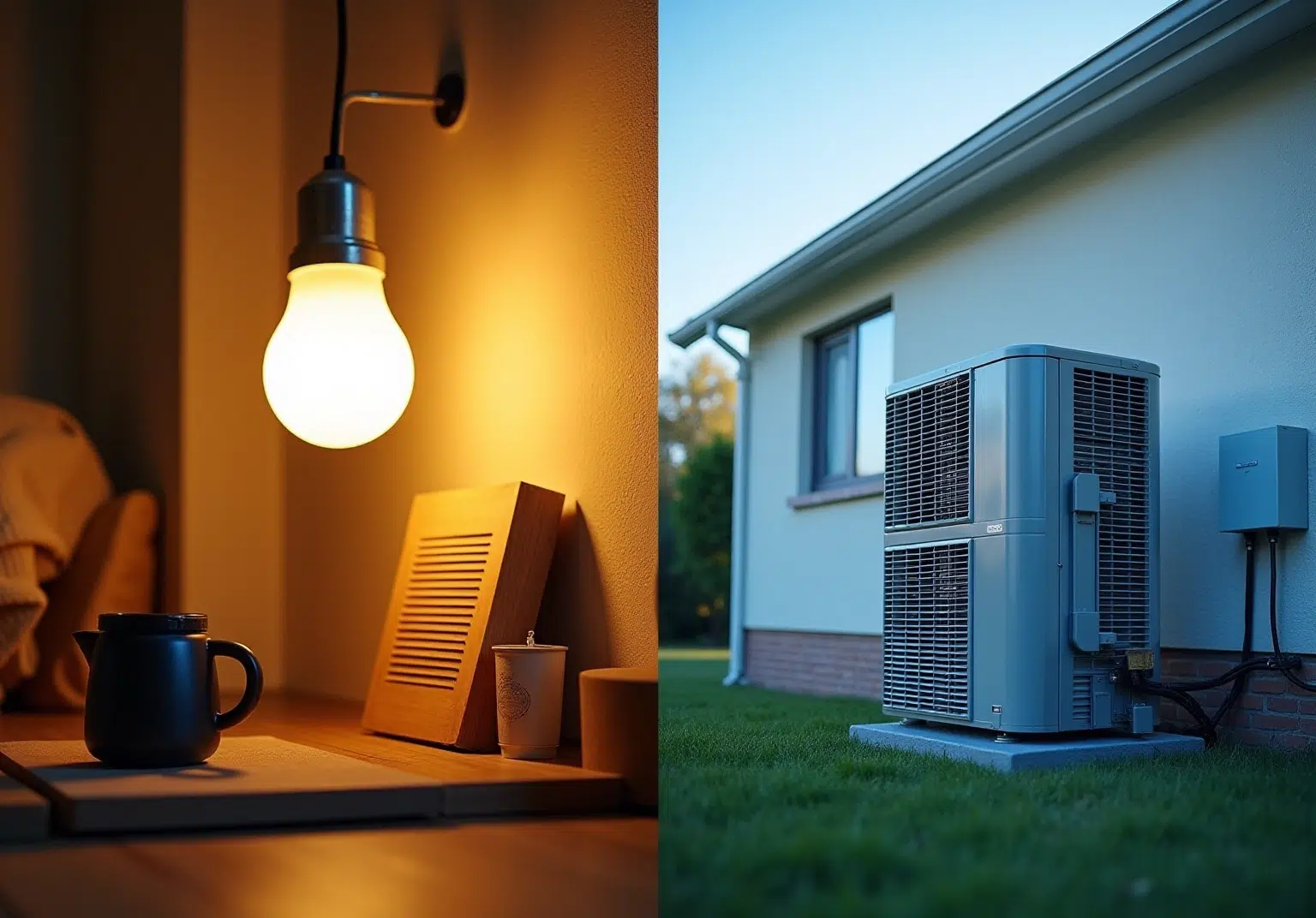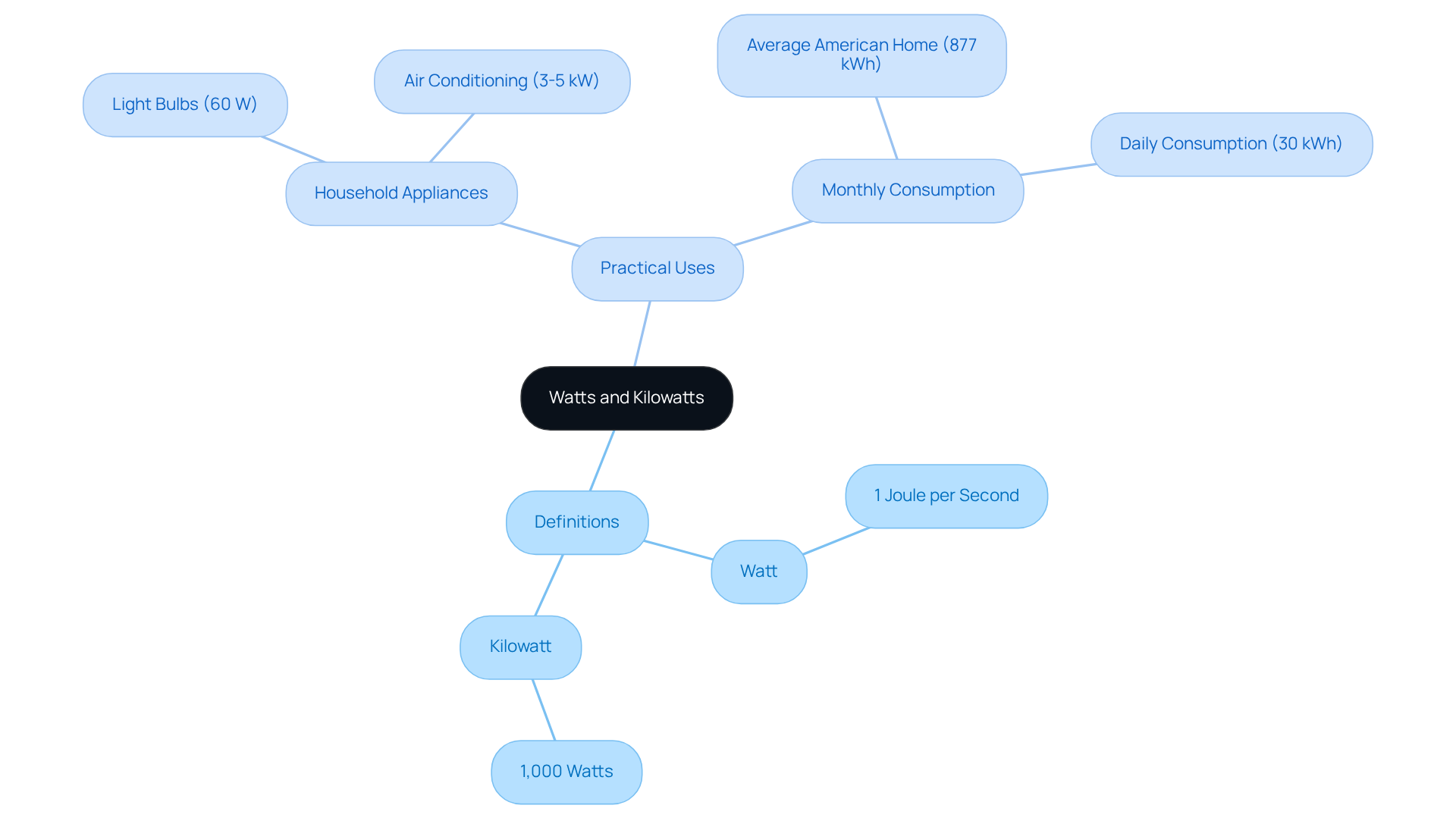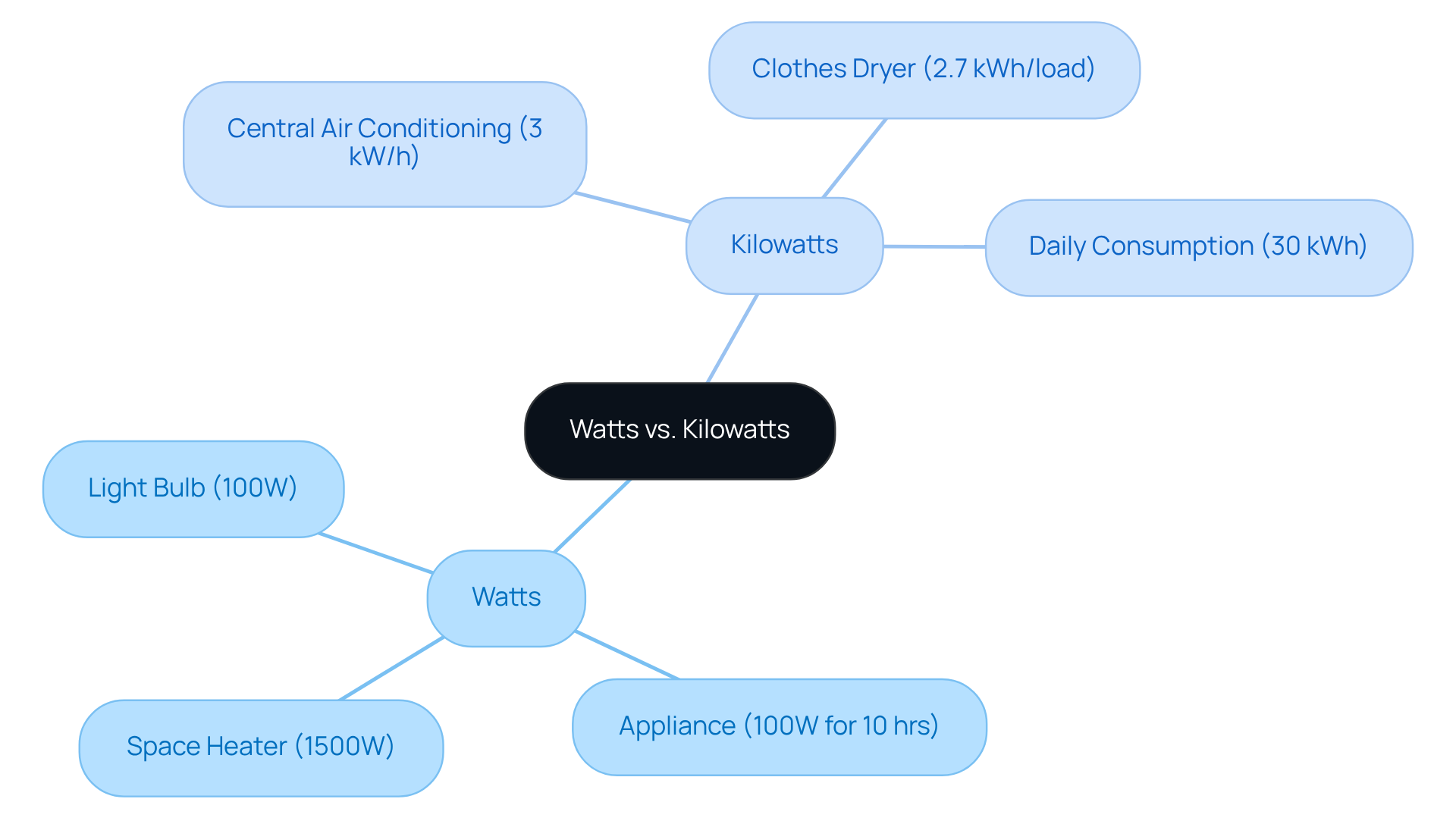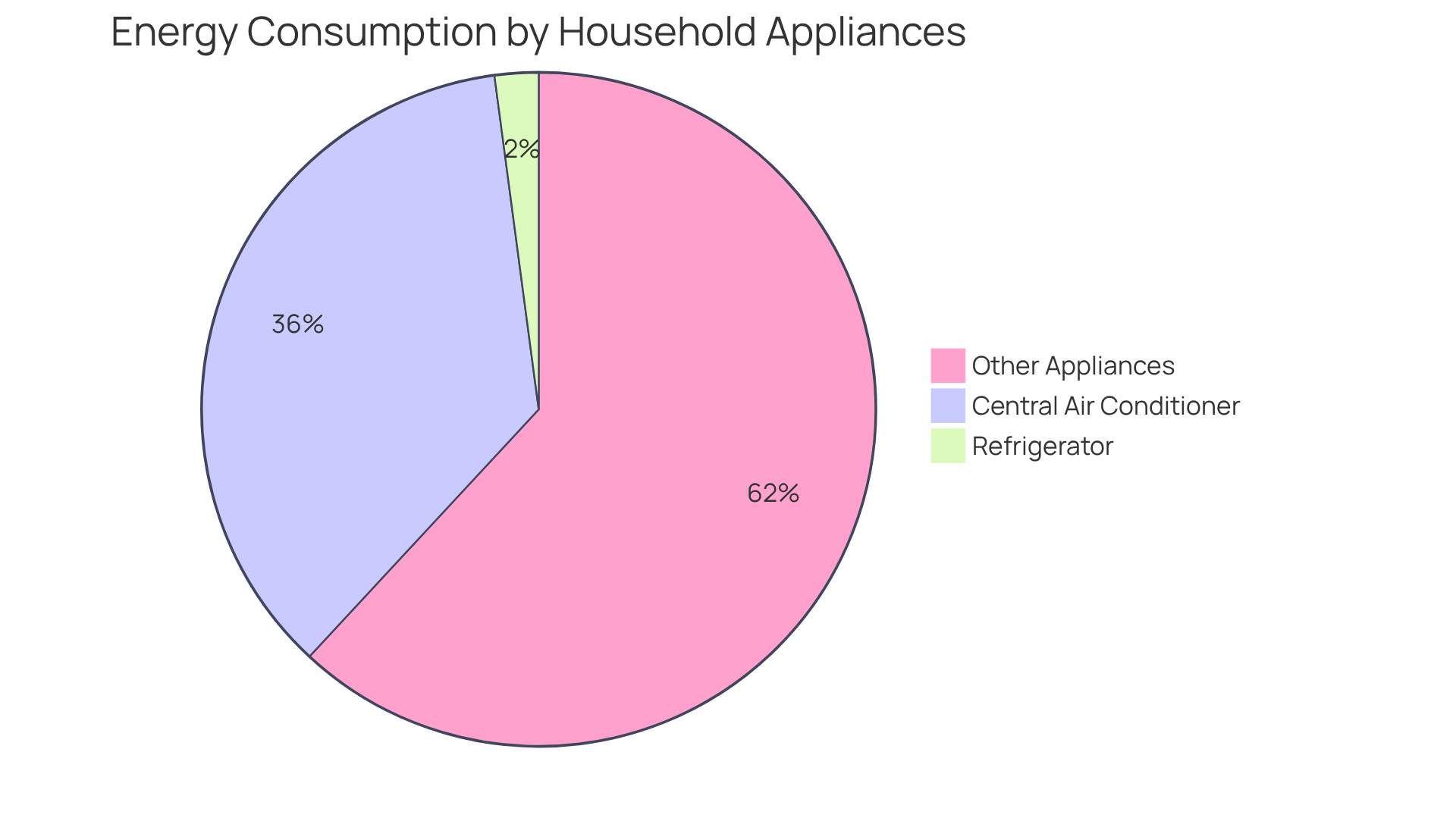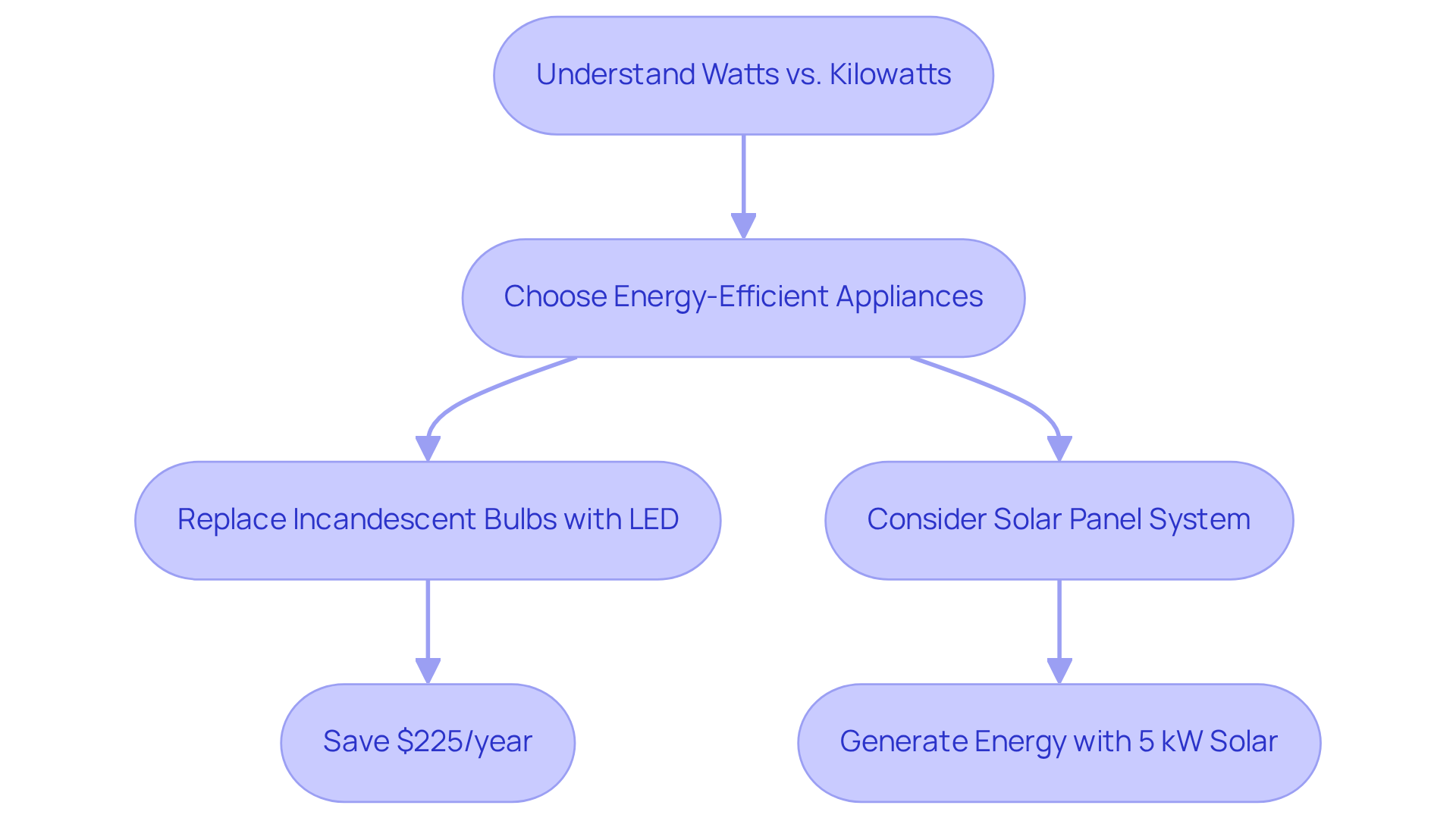Overview
Understanding the difference between a watt and a kilowatt is essential for managing your energy consumption effectively. A watt (W) is a unit of power equal to one joule per second, while a kilowatt (kW) represents 1,000 watts. This distinction becomes particularly important when considering the power needs of larger appliances in your home.
For instance, smaller items are typically measured in watts, whereas larger systems like air conditioners and solar panels are measured in kilowatts. By grasping these units, you can make more informed decisions about your energy usage.
We understand that navigating energy bills can be overwhelming, but recognizing these measurements can empower you to take control of your energy consumption and explore sustainable solutions for your home.
Introduction
We understand that navigating the complexities of energy consumption can feel overwhelming, yet it is essential for managing household expenses effectively. Watts and kilowatts are fundamental units of power that significantly impact how much energy our appliances use, which in turn affects our energy bills.
As homeowners increasingly strive for efficiency and sustainability, recognizing the distinction between these two measurements becomes vital. It’s common to feel the pressure of rising energy costs while trying to make informed decisions about power consumption.
By exploring the differences between watts and kilowatts, we not only clarify energy use but also empower ourselves to make choices that lead to a more sustainable future together. Let’s work towards optimizing our energy habits for the benefit of our homes and the environment.
Define Watts and Kilowatts: Fundamental Concepts
We understand that energy bills can be a significant concern for many homeowners. A unit of power (W) is the standard measurement in the International System of Units (SI), defined as one joule per second, and understanding what is the difference between a watt and a kilowatt is essential for quantifying the rate at which energy is consumed or produced. In contrast, a kW signifies a larger unit of energy, equal to 1,000 units of power, leading to the question of what is the difference between a watt and a kilowatt. The prefix ‘kilo’ indicates a factor of one thousand, which leads to the question of what is the difference between a watt and a kilowatt, making kilowatts a more practical measurement for larger electrical appliances and systems. For instance, a standard household light bulb uses approximately 60 units of power, whereas a central air conditioning system might require between 3 to 5 kW to operate effectively.
Understanding these units is crucial, especially as the average American home uses approximately 877 kWh per month, translating to an average daily consumption of around 29 kWh. This knowledge empowers homeowners to enhance their power consumption and explore solar solutions more efficiently. By comprehending power measurements, environmentally conscious homeowners can better assess solar panel options and make informed decisions regarding their energy usage.
Together, we can navigate these choices. Local solar businesses in Stockton, California, are here to offer customized solutions that align with your power requirements. Let’s work towards a more sustainable future, ensuring that your energy needs are met with care and consideration.
Differentiate Between Watts and Kilowatts: Key Distinctions
We understand that managing energy bills can be a significant concern for homeowners. What is the difference between a watt and a kilowatt, as well as other units of measurement, lies in their scale and use.
-
Watts measure the power consumption of smaller devices, such as light bulbs and small appliances.
- For instance, a 100-watt light bulb uses 0.1 kW when operational, and utilizing a 100-watt appliance for 10 hours requires 1 kWh of electrical energy.
- A 1,500-watt space heater functions at 1.5 thousand watts.
-
In contrast, larger units of measurement are utilized for appliances and systems like HVAC units and solar panel systems.
- A standard central air conditioning system uses approximately 3 units of power per hour, greatly influencing utility costs.
- Additionally, clothes dryers use about 2.7 kWh per load, illustrating how kilowatt usage translates into costs.
For homeowners seeking to control power consumption efficiently, understanding what is the difference between a watt and a kilowatt is essential. Together, we can explore ways to optimize your energy use.
The typical American residence consumes roughly 30 kWh of electricity daily, and by assessing the power usage of appliances, homeowners can make informed choices about their management strategies, ultimately resulting in savings on their electricity expenses. Let’s work towards a more sustainable future together.
Apply Watts and Kilowatts: Real-World Applications and Examples
In practical terms, knowing what is the difference between a watt and a kilowatt helps gauge the energy use of various household devices, and we understand that navigating these numbers can feel overwhelming. For instance, a 100-volt light bulb operating for 10 hours uses 1 kilowatt-hour (kWh) of power (100 volts x 10 hours = 1,000 volt-hours = 1 kWh). Similarly, a 2 kW electric oven used for one hour will consume 2 kWh. Comprehending these applications is essential for homeowners to assess their consumption and make informed choices about efficient appliances and systems.
To illustrate, consider the typical power usage of common household devices:
- A central air conditioner, with an average power of 4,000 units, consumes about 4 kWh per hour of operation. If operated for 9 hours, this equates to 36 kWh per day.
- A refrigerator generally consumes between 300 and 800 units of power; for example, a 250-unit power refrigerator operating for one hour every four hours utilizes approximately 2.1 kWh daily.
By understanding these figures, homeowners can better evaluate their consumption patterns and identify opportunities for savings through efficient upgrades.
Moreover, the average U.S. household consumes about 20-30 kWh daily, which can vary significantly based on factors such as home size, climate, and appliance efficiency. For example:
- A typical 3,000-square-foot home may use between 50-70 kWh daily.
- A smaller 1,500-square-foot home might average 30-40 kWh.
We recognize that these variations can be concerning, but they also present opportunities for improvement.
Furthermore, with the recent utility provider’s rate hike effective June 1, 2025, increasing power costs by over 15%, it is more essential than ever to understand what is the difference between a watt and a kilowatt. It’s common to feel anxious about rising energy costs, but by understanding your power usage, you can make informed choices that lead to lower utility costs and improved efficiency. Together, we can navigate these changes and work towards a more sustainable energy future.
Understand the Importance: Energy Efficiency and Cost Implications
For homeowners who are concerned about their energy bills, understanding what is the difference between a watt and a kilowatt is essential. By grasping these concepts, you can make informed choices about energy-efficient appliances that consume less power, ultimately leading to significant savings on your electricity bills. For example, when you replace a 100-watt incandescent bulb with a 10-watt LED bulb, you could save around $225 each year in power expenses. LED bulbs consume up to 90% less power and last up to 25 times longer than traditional bulbs, making this a wise choice for both your wallet and the environment.
We understand that the prospect of investing in solar power can feel daunting, but it’s a rewarding step towards energy independence. Solar power systems, including Tesla home chargers and solar panels, are typically rated in watts, allowing you to evaluate your potential power generation and the savings that come with it. By investing in a solar panel system rated at 5 kilowatts, you can generate substantial energy, potentially offsetting a significant portion of your electricity costs.
It’s common to feel overwhelmed by energy measurements, but experts emphasize that understanding these power ratings can empower you to make choices that enhance not only your financial well-being but also contribute to environmental sustainability. Together, we can prioritize energy-efficient upgrades, including solar solutions, leading to long-term savings and a reduced carbon footprint. This journey towards sustainability is a win-win for both your finances and our planet. Let’s work towards a brighter, more efficient future together.
Conclusion
Understanding the distinction between watts and kilowatts is vital for anyone concerned about managing their energy consumption effectively. We understand that rising energy bills can be a source of stress, and knowing that watts measure the power of smaller devices while kilowatts serve as a more practical unit for larger appliances can empower you to take control. This knowledge not only enables homeowners to track their energy usage but also equips them to make informed decisions regarding energy-efficient upgrades and sustainable solutions.
Throughout this discussion, we highlight key insights that underscore the importance of these measurements in everyday life. From recognizing the power consumption of common household devices like light bulbs and air conditioners to understanding the potential savings from switching to energy-efficient appliances, the implications of watts and kilowatts extend beyond mere numbers. The average household’s energy consumption patterns reveal opportunities for optimization and cost savings, especially in light of rising utility rates.
Ultimately, grasping the difference between watts and kilowatts serves as a foundation for making smarter energy choices. As you prioritize energy efficiency and explore options like solar power, you can reduce your electricity bills while contributing to a more sustainable future. Embracing these concepts not only benefits your finances but also plays a crucial role in fostering environmental responsibility. Together, we can embark on the journey toward energy efficiency and sustainability, starting with a deeper understanding of the power you use—let this understanding guide your choices for a brighter tomorrow.


